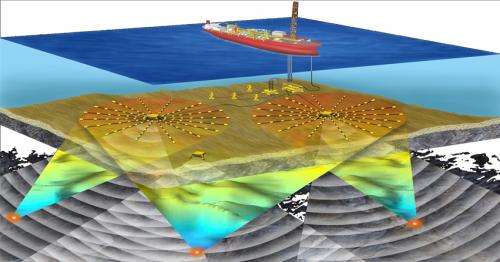New seismic survey technique could save dolphins' hearing

Conventional seismic imaging transmits sound energy into the ground and builds a picture of the underlying geology by analysing how the energy waves are reflected back to the receiver.
These techniques create a series of loud bangs that can disturb marine wildlife, affecting their behaviour and migration habits. The University of Bath is already active in monitoring and reducing these impacts.
In contrast, a new technology called Acoustic Zoom, developed by University of Bath alumnus Professor Jaques Guigné in collaboration with his former PhD supervisor Professor Nick Pace, suppresses the reflected energy signal and instead records how the sound energy is scattered; data that is normally discarded but still holds important information.
This scattered sound data is used to create a highly detailed map of the underground geology, enabling subtle details such as fissures and fractures in the strata to be seen that cannot be detected using traditional seismic surveying.
The Acoustic Zoom technology goes further by reducing the original energy, using a ‘marine trombone’ that can be adjusted to release smaller levels of energy at much higher frequencies, which reduces the effects on underwater animals.
Professor Guigné explained: “"We’'re really excited about this technology because it allows us to take virtual core samples, giving us a much more detailed understanding of subtle geological features, without any drilling.
“"It works by analysing the scattered sound energy rather than the reflected energy that is normally recorded. The scattered signal is a lot weaker so it’s been quite tricky to do successfully.
“"It’'s a bit like driving at night trying to focus on the face of the driver of an oncoming car through the glare of their headlights."
“Acoustic Zoom is also gentler on the environment because it releases smaller amounts of energy over a longer time and at higher frequencies, so although marine life can still hear the sound waves, they are much less intrusive.
“"We hope this new technology will help avoid unnecessary exploratory drilling by the oil industry and also reduce the impact of underwater surveys on the environment.”"
More information: Guigné et al (2014) Acoustic zoom high-resolution seismic beamforming for imaging specular and non-specular energy of deep oil and gas bearing geological formations is published in Journal of Natural Gas Science and Engineering. www.sciencedirect.com/science/ … ii/S1875510014002728
Provided by University of Bath




















